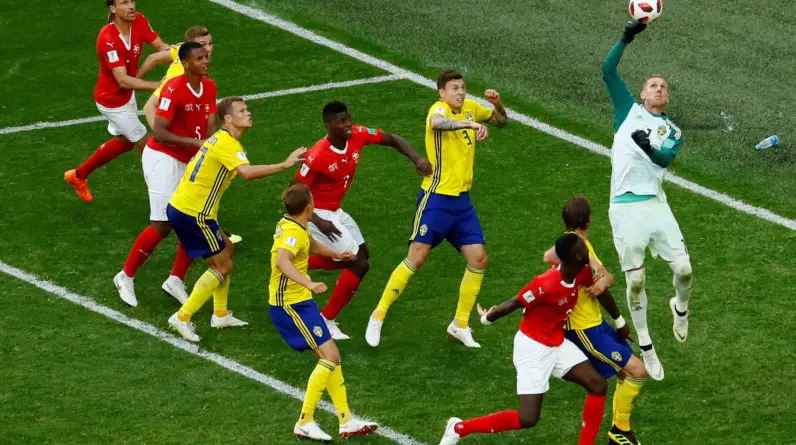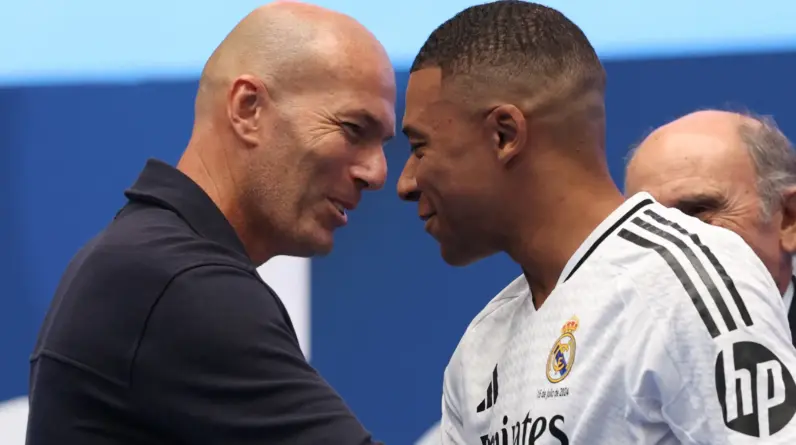
Soccer, once a sport rooted in local communities, has now become a global powerhouse. Globalization has revolutionized the way the game is played, consumed, and celebrated around the world. From the rise of international leagues to the migration of talent and the explosion of digital media, the sport has transformed into a multi-billion-dollar industry. But with this global rise, what happens to the local soccer cultures that were once the backbone of the game? This article explores how globalization is reshaping local soccer traditions, fan cultures, and the very essence of the sport.
Global Soccer Leagues: A Game Changer
The globalization of soccer is most evident in the rise of top-tier international leagues, such as the English Premier League, La Liga, Serie A, and the Bundesliga. These leagues now feature players from across the globe, turning them into global brands with massive international followings. While the influx of global talent has boosted competition and the overall quality of play, it has also shifted the focus from local fanbases to international revenue streams. For soccer clubs, it’s no longer just about representing a local community—it’s about appealing to global audiences, changing the dynamics of fan loyalty.
The Foreign Player Effect: Talent vs. Tradition
One of the most significant impacts of globalization on local soccer cultures is the influx of international players. While the migration of talent has undeniably elevated the sport’s level of competition, it has also led to the erosion of regional identities. Local fans who once felt a deep connection to homegrown players now find themselves supporting teams filled with foreign stars. This shift has led to a sense of alienation for some fans, who may feel that their club’s identity has been diluted or commercialized in the pursuit of global success.
The Globalization of Soccer Merchandising
The commercialization of soccer has gone hand-in-hand with globalization, and nowhere is this more evident than in soccer merchandising. Clubs that were once rooted in their local communities are now global brands, selling jerseys, shoes, and memorabilia to fans worldwide. This massive expansion of merchandise sales has resulted in a loss of the personal connection between clubs and their local fans. Instead of focusing on fostering a passionate, regional fanbase, many clubs are now prioritizing international sales, shifting away from their traditional roots.
The Changing Dynamics of Fan Culture
Fan culture, once driven by local rivalries and deep community ties, has been significantly altered by the rise of global soccer. In the digital age, fans are no longer confined to supporting their local teams. With the growth of social media, streaming platforms, and 24/7 news coverage, soccer fans can follow international teams, players, and leagues from anywhere in the world. As a result, traditional fan loyalty is being replaced by a more globalized, virtual fanbase. While this has allowed fans to connect with their favorite teams on a deeper level, it has also fragmented local support, making the sport feel more like a global commodity than a local tradition.
The Impact on Smaller Leagues: Struggling to Keep Up
In countries with less established soccer traditions, globalization poses significant challenges. Smaller leagues often struggle to compete with the financial muscle of top European clubs, leading to the migration of their best players abroad. This talent drain weakens local leagues and dilutes the sense of pride that fans once felt in supporting homegrown talent. As players flock to wealthier clubs, local teams face the uphill battle of maintaining their competitive edge and cultural relevance in the face of global pressures.
The Influence of Social Media: Globalizing Soccer Fans
Social media has further accelerated the globalization of soccer. Platforms like Instagram, Twitter, YouTube, and TikTok have allowed fans to engage with players, teams, and clubs in real time, regardless of their geographical location. This has led to a rise in global fanbases, where individuals from different parts of the world rally around the same clubs and players. While this has fostered a sense of global community, it has also diluted the regional loyalty that once defined soccer fandom. For many, soccer is no longer just about local pride—it’s about following global stars and trends.
Coaching Evolution: Adapting to Global Standards
The influx of international players has not only impacted the way soccer is played but also how it is coached. In order to remain competitive, local coaches often adopt international training techniques, tactics, and philosophies. While this has improved certain aspects of the game, it has also led to the loss of traditional playing styles that were once unique to specific countries or regions. The more standardized coaching approaches, influenced by global trends, mean that local soccer cultures are increasingly losing their distinctiveness.
National Identity in Soccer: The Global Talent Pool
Despite the rise of global soccer leagues and the blending of international talent, soccer continues to play a vital role in expressing national identity. National teams, in particular, are still symbols of pride and unity. However, globalization has made national representation more complex. Many national teams now feature players who were born abroad or have dual citizenship, leading to debates about the authenticity of their representation. While the global talent pool has raised the level of play, it has also challenged the traditional view of what it means to represent one’s country on the field.
The Future of Local Soccer Cultures: Striking a Balance
As soccer becomes more globalized, local soccer cultures face the risk of being overshadowed by commercial interests and global trends. The rise of international leagues, the influx of foreign players, and the fragmentation of fan loyalty are all part of this transformation. However, this doesn’t mean that local soccer cultures are doomed to extinction. The challenge lies in striking a balance between embracing the benefits of globalization—such as increased competition and access to global markets—while still preserving the unique cultural aspects that have made soccer a source of community pride for generations.
Conclusion: Preserving the Essence of Local Soccer in a Globalized World
In conclusion, while globalization has transformed soccer into a global spectacle, it has also brought with it significant challenges for local soccer cultures. From the commercialization of the sport to the changing dynamics of fan support and player migration, the essence of local soccer is being reshaped. However, by finding a balance between embracing global growth and preserving regional identities, soccer can continue to be a powerful force for community, pride, and cultural expression—both locally and globally. As soccer’s future unfolds, it will be crucial for local clubs, fans, and governing bodies to navigate this new global landscape while Soccer, once a sport rooted in local communities, has now become a global powerhouse. Globalization has revolutionized the way the game is played, consumed, and celebrated around the world. From the rise of international leagues to the migration of talent and the explosion of digital media, the sport has transformed into a multi-billion-dollar industry. But with this global rise, what happens to the local soccer cultures that were once the backbone of the game? This article explores how globalization is reshaping local soccer traditions, fan cultures, and the very essence of the sport.
Global Soccer Leagues: A Game Changer
The globalization of soccer is most evident in the rise of top-tier international leagues, such as the English Premier League, La Liga, Serie A, and the Bundesliga. These leagues now feature players from across the globe, turning them into global brands with massive international followings. While the influx of global talent has boosted competition and the overall quality of play, it has also shifted the focus from local fanbases to international revenue streams. For soccer clubs, it’s no longer just about representing a local community—it’s about appealing to global audiences, changing the dynamics of fan loyalty.
The Foreign Player Effect: Talent vs. Tradition
One of the most significant impacts of globalization on local soccer cultures is the influx of international players. While the migration of talent has undeniably elevated the sport’s level of competition, it has also led to the erosion of regional identities. Local fans who once felt a deep connection to homegrown players now find themselves supporting teams filled with foreign stars. This shift has led to a sense of alienation for some fans, who may feel that their club’s identity has been diluted or commercialized in the pursuit of global success.
The Globalization of Soccer Merchandising
The commercialization of soccer has gone hand-in-hand with globalization, and nowhere is this more evident than in soccer merchandising. Clubs that were once rooted in their local communities are now global brands, selling jerseys, shoes, and memorabilia to fans worldwide. This massive expansion of merchandise sales has resulted in a loss of the personal connection between clubs and their local fans. Instead of focusing on fostering a passionate, regional fanbase, many clubs are now prioritizing international sales, shifting away from their traditional roots.
The Changing Dynamics of Fan Culture
Fan culture, once driven by local rivalries and deep community ties, has been significantly altered by the rise of global soccer. In the digital age, fans are no longer confined to supporting their local teams. With the growth of social media, streaming platforms, and 24/7 news coverage, soccer fans can follow international teams, players, and leagues from anywhere in the world. As a result, traditional fan loyalty is being replaced by a more globalized, virtual fanbase. While this has allowed fans to connect with their favorite teams on a deeper level, it has also fragmented local support, making the sport feel more like a global commodity than a local tradition.
The Impact on Smaller Leagues: Struggling to Keep Up
In countries with less established soccer traditions, globalization poses significant challenges. Smaller leagues often struggle to compete with the financial muscle of top European clubs, leading to the migration of their best players abroad. This talent drain weakens local leagues and dilutes the sense of pride that fans once felt in supporting homegrown talent. As players flock to wealthier clubs, local teams face the uphill battle of maintaining their competitive edge and cultural relevance in the face of global pressures.
The Influence of Social Media: Globalizing Soccer Fans
Social media has further accelerated the globalization of soccer. Platforms like Instagram, Twitter, YouTube, and TikTok have allowed fans to engage with players, teams, and clubs in real time, regardless of their geographical location. This has led to a rise in global fanbases, where individuals from different parts of the world rally around the same clubs and players. While this has fostered a sense of global community, it has also diluted the regional loyalty that once defined soccer fandom. For many, soccer is no longer just about local pride—it’s about following global stars and trends.
Coaching Evolution: Adapting to Global Standards
The influx of international players has not only impacted the way soccer is played but also how it is coached. In order to remain competitive, local coaches often adopt international training techniques, tactics, and philosophies. While this has improved certain aspects of the game, it has also led to the loss of traditional playing styles that were once unique to specific countries or regions. The more standardized coaching approaches, influenced by global trends, mean that local soccer cultures are increasingly losing their distinctiveness.
National Identity in Soccer: The Global Talent Pool
Despite the rise of global soccer leagues and the blending of international talent, soccer continues to play a vital role in expressing national identity. National teams, in particular, are still symbols of pride and unity. However, globalization has made national representation more complex. Many national teams now feature players who were born abroad or have dual citizenship, leading to debates about the authenticity of their representation. While the global talent pool has raised the level of play, it has also challenged the traditional view of what it means to represent one’s country on the field.
The Future of Local Soccer Cultures: Striking a Balance
As soccer becomes more globalized, local soccer cultures face the risk of being overshadowed by commercial interests and global trends. The rise of international leagues, the influx of foreign players, and the fragmentation of fan loyalty are all part of this transformation. However, this doesn’t mean that local soccer cultures are doomed to extinction. The challenge lies in striking a balance between embracing the benefits of globalization—such as increased competition and access to global markets—while still preserving the unique cultural aspects that have made soccer a source of community pride for generations.
Conclusion: Preserving the Essence of Local Soccer in a Globalized World
In conclusion, while globalization has transformed soccer into a global spectacle, it has also brought with it significant challenges for local soccer cultures. From the commercialization of the sport to the changing dynamics of fan support and player migration, the essence of local soccer is being reshaped. However, by finding a balance between embracing global growth and preserving regional identities, soccer can continue to be a powerful force for community, pride, and cultural expression—both locally and globally. As soccer’s future unfolds, it will be crucial for local clubs, fans, and governing bodies to navigate this new global landscape while honoring the traditions that have made soccer the world’s most beloved sport.honoring the traditions that have made soccer the world’s most beloved sport.






